|
Isaac Jenks was Mayor of
Wolverhampton from 1872 until 1873. He was born in
Sedgley in 1816 and at the age of 12, began an
apprenticeship at the Shrubbery Iron Works, owned by
George and Edward Thorneycroft. Isaac then worked for
Solley Brothers at Great Bridge Iron Works and learned
the process of converting puddled, or malleable iron
into puddled steel.
In 1857 he founded the Minerva Iron
and Steel Works in Horseley Fields, and soon opened
Beaver Ironworks, also in Lower Horseley Fields.
He was a very
successful, self-made businessman who became one of the
most wealthy ironmasters in Wolverhampton. By the early
1870s, his ironworks were producing up to 80% of the
total UK steel exports to the USA.
Isaac Jenks was a staunch Wesleyan
Methodist, and when he became Mayor of Wolverhampton on
November 9th, 1872, the Corporation attended Darlington
Street Methodist Church to hear a sermon. He had a kind
and benevolent disposition, a quiet and unassuming man,
who gave freely to good causes, particularly those
assisting the building of places of worship.
|
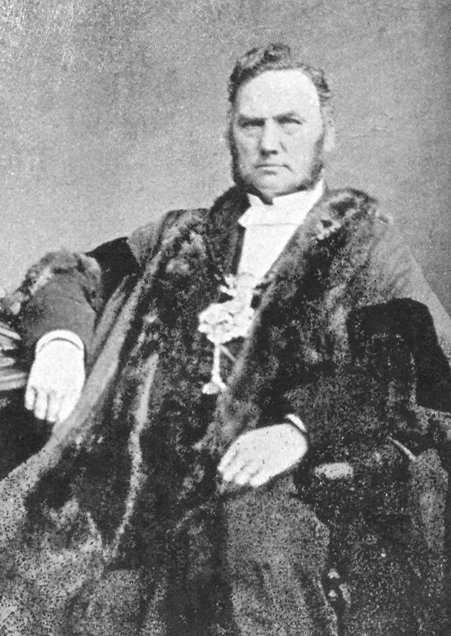
Isaac Jenks, JP. |
| On the 14th April, 1873 he gave the
gold chain and badge of office that would be worn by
future mayors at council meetings and civic functions.
It is of Greek design, weighs 30ozs. and cost £250. He
lived with his wife Rebecca, 2 sons and 3 daughters at
Morley House on Dunstall Hill.
A New Town Hall
By the mid 1860s the old Town Hall
in North Street had become out of date and could no
longer cater for the council’s needs. In April 1865,
during a meeting of the council, Alderman Fowler
proposed that a new and larger town hall was a
necessity. There was a large and unused piece of land
behind the building that cost £7,000 and could be used
as part of the site for a larger town hall, which would
include a council chamber and a magistrates' court.
After a long discussion it was agreed that the old Town
Hall should be demolished and that architects would be
invited to send-in designs for a good building, costing
no more than £15,000. As an incentive, the winner would
receive £100 and the runner-up would receive £50. |
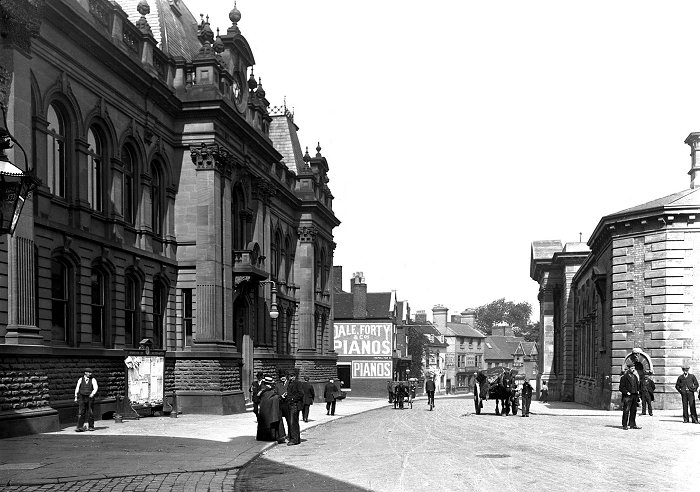
The Town Hall and the Retail Market.
| The competition was advertised in
many journals and a committee was appointed to consider
any plans that were submitted and to report on the
matter to the council. There were nineteen entries. The
committee favoured a French Renaissance design by Ernest
Bates, an architect from Manchester, which would cost
£17,000. Mr. Robinson, also from Manchester, sent a
design for a cheaper building that would cost £15,750.
The council accepted Mr. Robinson’s design, but before
the contract was signed, Mr. Robinson discovered that
alterations and additions had been made to his plans, so
he refused to sign the contract and withdrew. The
council then accepted Mr. Bates’ design, which was put
out to tender. The lowest tender for £17,200 came from
the local builder, Philip Horsman, which was accepted. A
further sum of £1,000 was then added to the contract
price, for which Mr. Horsman agreed to provide Caen
stone for the front of the building. |
|
The foundation stone was laid by
the Mayor, Alderman Moses Ironmonger, who afterwards gave a
banquet in the Exchange Building to honour the occasion.
The building would contain a spacious council chamber,
the Mayor's parlour, the magistrates' court, the quarter
sessions court, the Town Clerk's office, the council
offices, meeting rooms, the police barracks, prison cells
and the fire station.
The Town Hall took two years to
build and was officially opened by Lord Wrottesley, on
the 19th October, 1871.
A marble statue of George
Benjamin Thorneycroft, the first Mayor of the Borough
was erected in the entrance hall in 1878. It had
previously been placed over his vault in the cemetery,
where it had stood for twenty years. After a thorough
clean, it was moved to the new Town Hall.
|
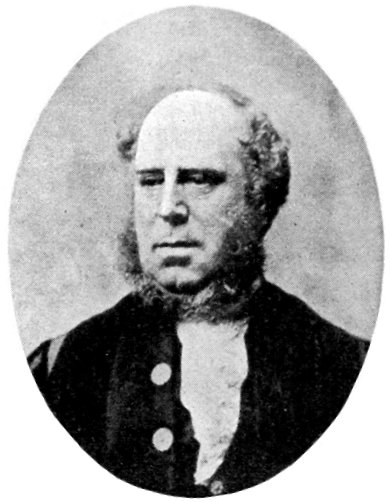
Moses Ironmonger, JP. |
| When the building came into use, a
number of problems were discovered. The acoustics in the
council chamber were awful, due to a bad echo which made
it almost impossible to hear what people were saying.
When the statement of the cost of the new building was
presented to the council by the committee, Councillor
William Highfield Jones stated that “it was clear that a
large amount of money had been literally wasted, the new
Town Hall had cost double what it ought to have done. In
the next place, the building had been so badly
constructed that a prisoner in custody for a serious
offence had actually been able to scale the walls of the
exercise ground and get clean away in broad daylight.”
He also said that “the Borough police court and the
quarter sessions court were so badly designed in regard
to their acoustic properties that the magistrates, the
Recorder, and jury were not able to hear the evidence of
witnesses brought before them.” |
|
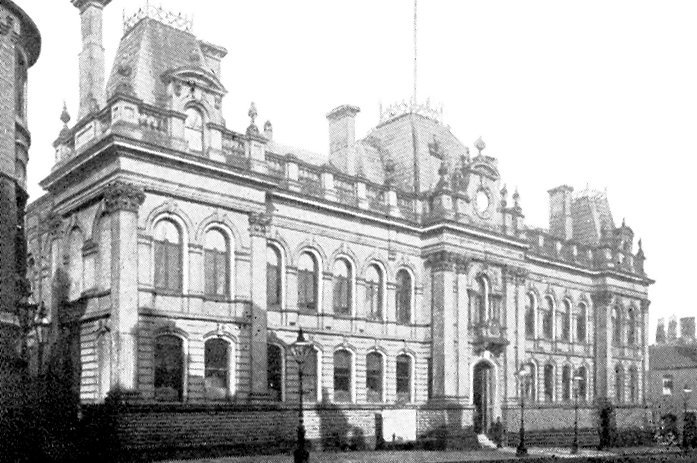
The Town Hall in about 1900. |
| The members of the Council all
complained about the miserable echo at Council meetings
and press reporters bitterly complained that they could
not correctly report the speeches. Many experiments were
tried to improve the acoustic properties of the Council
Chamber including the hanging of flags on the walls.
Eventually canvas sheeting was placed below the existing
ceiling, which improved the sound, but was very ugly. It
remained there until the building was remodelled in
1903. The building was Grade II Listed on the 16th July,
1949. |
|
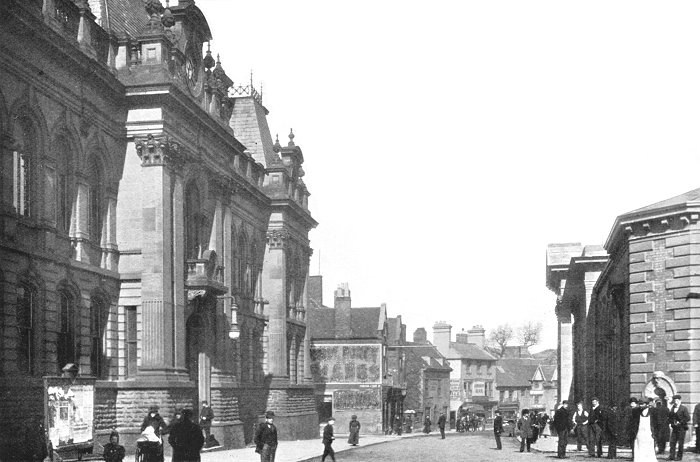
Another early view of the Town
Hall. |
|
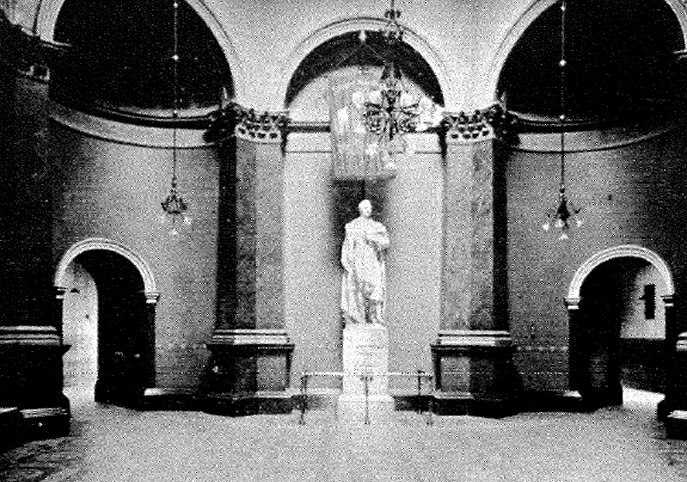
The entrance hall and the
statue of George Benjamin Thorneycroft. |
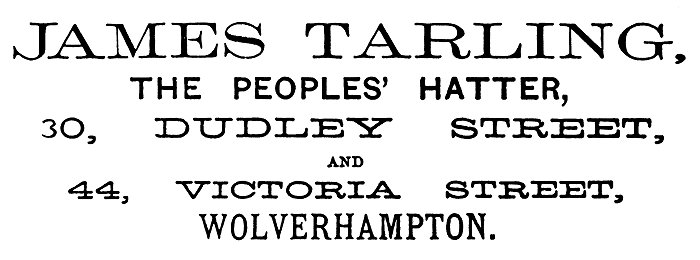
An advert from 1877.
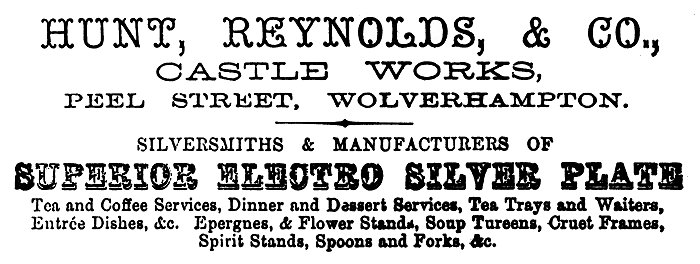
An advert from 1877.
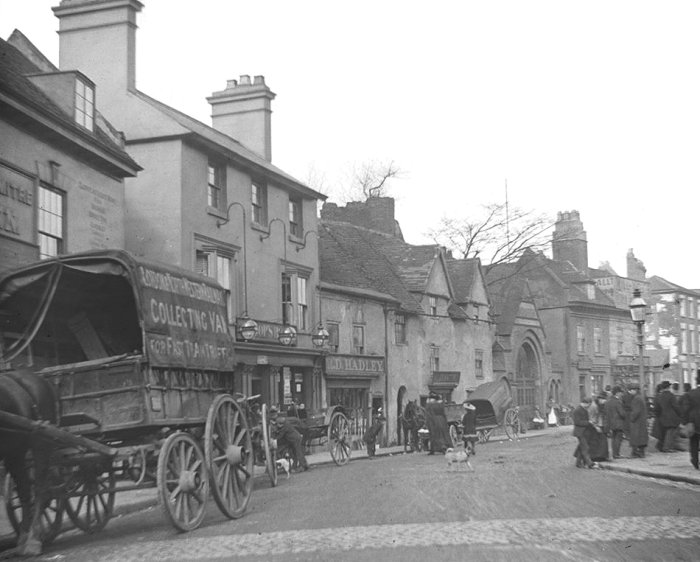
North Street.
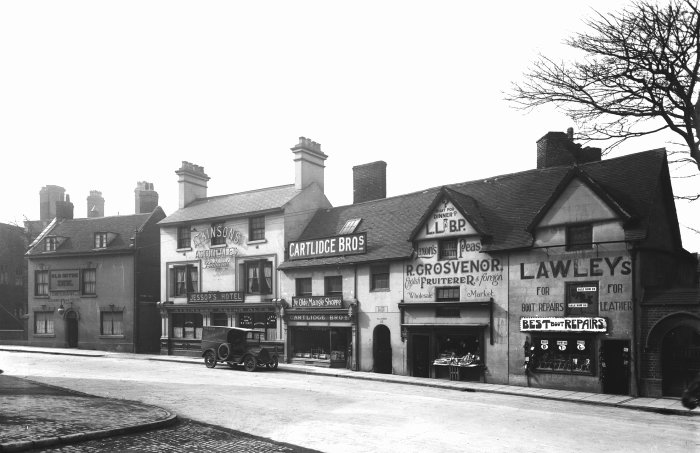
North Street in the 1930s.
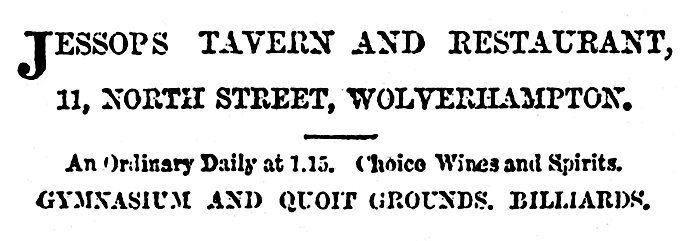
An advert from 1874.

An advert from 1877.
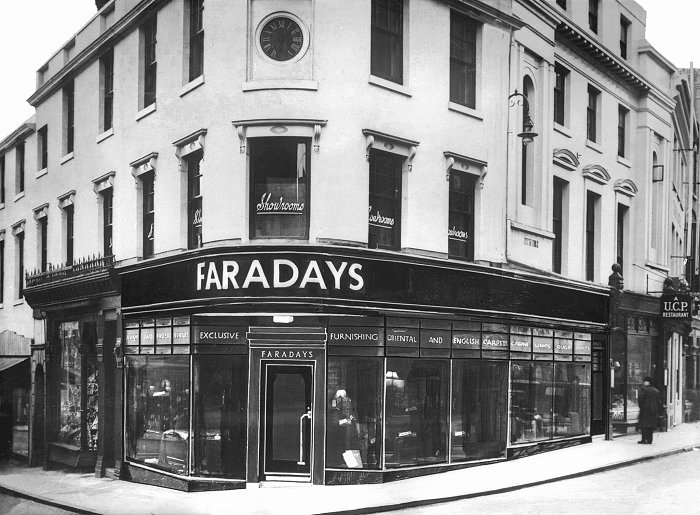
The junction of North Street and
Darlington Street.

An advert from 1877.
 |
|
 |
|
 |
Return to
West Park |
|
Return to
the beginning |
|
Proceed to
Slum Clearance |
|